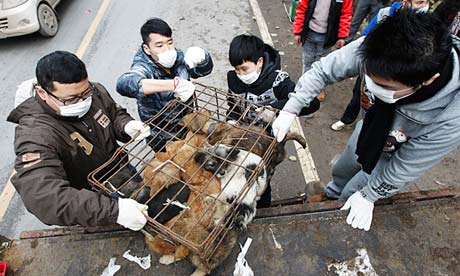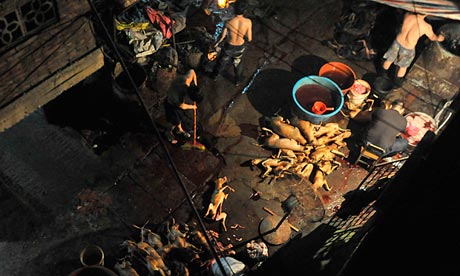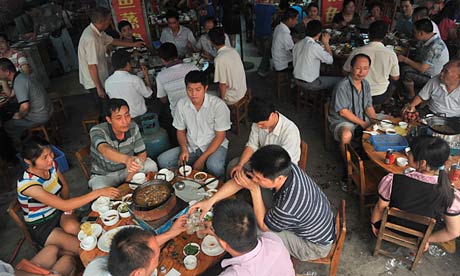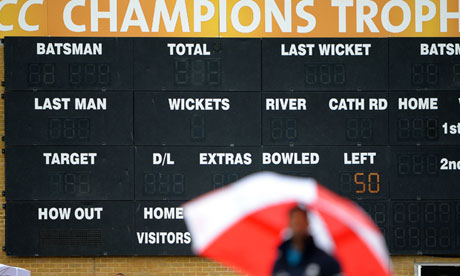From the World Cup to the G8, many countries are paying an extortionate price for hosting these pointless displays

A protester in Rio de Janeiro, Brazil. Photograph: Imago / Barcroft Media
On Tuesday evening a loud noise engulfed Parliament Square: a demonstration of flag-waving Brazilians. I asked one of them what he was protesting. It was, he said, the waste of money on the Olympics. I told him he was in the right city but the wrong year.
Here we go again. Brazil has been bamboozled into blowing $13bn on next year's football World Cup, and then on a similar sum to be later extorted by the International Olympic Committee to host the 2016 Games. Brazil's leftwing leader, Dilma Rousseff, was bequeathed the games by her populist predecessor, Lula da Silva. She has desperately tried to side with the protesters, but she is trapped by the oligarchs of Fifa and the IOC.
Brazil's citizens are being hit with higher bus fares and massive claims on health and welfare budgets. Up to half a million people may take to the streets this weekend to complain of "first world stadiums, third world schools". What is impressive about the demonstrators is that they appear not to be against sport as such, but against the extravagance of their staging. They are talking the language of priorities.
The World Cup is an ongoing scandal run by Fifa's unsackable boss, Sepp Blatter, on the back of ticket and television sales and soccer hysteria. Having bled the Brazilian exchequer of billions for new stadiums, he has the cheek to plead with demonstrators that "they should not use football to make their demands heard". Why not? Blatter uses football to make his demands heard.
The Olympics are likewise sold by the IOC to star-struck national leaders as offering glory for political gain. Their purpose-built stadiums, luxurious facilities, lunatic security and lavish hospitality are senseless, yet are backed by construction and security lobbies and a chorus of chauvinist public relations. If the cost is bankruptcy, as in Montreal and Athens, too bad. The golden caravan can move on to trap some new victim.
The World Cup and the Olympics are television events that could be held at much less expense and ballyhoo in one place. As it is, host nations are deluged with promises of "legacy return" that everyone knows are rubbish. Costs escalate to an extent that would see most managers in handcuffs, but gain bonuses and knighthoods for Olympic organisers.
Sport is not alone in this addiction to the jamboree. The London Olympics last year morphed into politics, as diplomacy, culture and trade were conflated in an outpouring of nonsensical rhetoric about £13bn in contracts. A summit used to be a meeting ad hoc to resolve a crisis in world affairs. It is now a Field of Cloth of Gold, a continuous round of hospitality, rest and recuperation, flattering the vanity of world leaders.
This week's G8 shindig in Northern Ireland was pointless – a night and two days on a bleak Irish lough at a cost to taxpayer of £60m and a deployment of 1,000 policemen per delegate. It was held in Fermanagh to be as far as possible from demonstrators and "real people". The sole outcome was modest progress on tax avoidance, but that cannot have required two days in Fermanagh. Could they not have used Skype?
The survival of the G8 is extraordinary, based on the pretence that the second world war protagonists are still major world powers. When Vladimir Putin refused to attend the 2012 summit in Washington, there were hopes that it might disappear. Putin was back this week, though his face suggested he regrets it.
In his iconoclastic study of postwar summits, David Reynolds remarked that they are based on hope over experience. Most are either pointless or disastrous. Reynolds compared Tony Blair's Iraq meeting with George Bush in January 2003 with Chamberlain and Munich. Their high point was during the cold war, yet it is only since then that summits have become fixed in the political year. David Cameron's diary is crammed with G8s, G20s, UN, EU and Commonwealth conclaves. The elephantine G20 has become a carnival of obsessive security. The 2012 gathering in Toronto was newsworthy only for apolicing bill close to $1bn for two days. It did nothing for the poor but devastated the local economy for a year.
Power craves authenticity. On his way back from the G8 to America, President Obama stood in Berlin at (or near) the Brandenburg Gate where Kennedy delivered his freedom address 50 years ago. A special stadium had to be built for him, and a wall of bullet-proof glass. He gave a hand-picked audience a welter of platitudes and went home.
Technology has moved on since 1963. Obama could have copied Kennedy on Facebook. Yet he had to be in Berlin in person, as he was in Ulster in person. The whole thing could have been staged for television, but television needs some contact with reality. Electronics can create these events and disseminate them. But nothing can replace the chemistry of the live presence.
Futurologists of the internet used to claim that electronics would render obsolete such sporting, political, even musical events. Human avatars would cruise cyberspace and engage with their audiences at the touch of a button. Leaders would communicate with each other from their desks in real time on giant screens. Contact would be digitised. We could experience each other's presence without the need for flesh-and-blood exchange. There would be huge savings in plane tickets.
This ignores the yearning of all people, leaders and led, rich and poor, to feel involved, to participate in some degree in a live experience. Nations want to be visited by political, sporting or artistic celebrities. They want football heroes, racing cars and three tenors on their soil. Leaders crave the status of "hosting" fellow leaders, of standing side-by-side with power. It is not the same on the web.
To this quest for authenticity Brazil's demonstrators offer a corrective. They point to its cost. The addiction to "eventism" can be so potent, so demanding of security and so expensive as to defy restraint. London's £9bn extravaganza was not necessary to host an international athletics show. It should have been the last such display of conspicuous consumption by the rich in the face of the poor. Yet Rio de Janeiro is now saddled with not one extravaganza but two.
So congratulations to Brazilians for saying what Britain last year lacked the guts to say: that sometimes enough is enough. If I were Blatter and his henchmen, I would get out of town fast.








